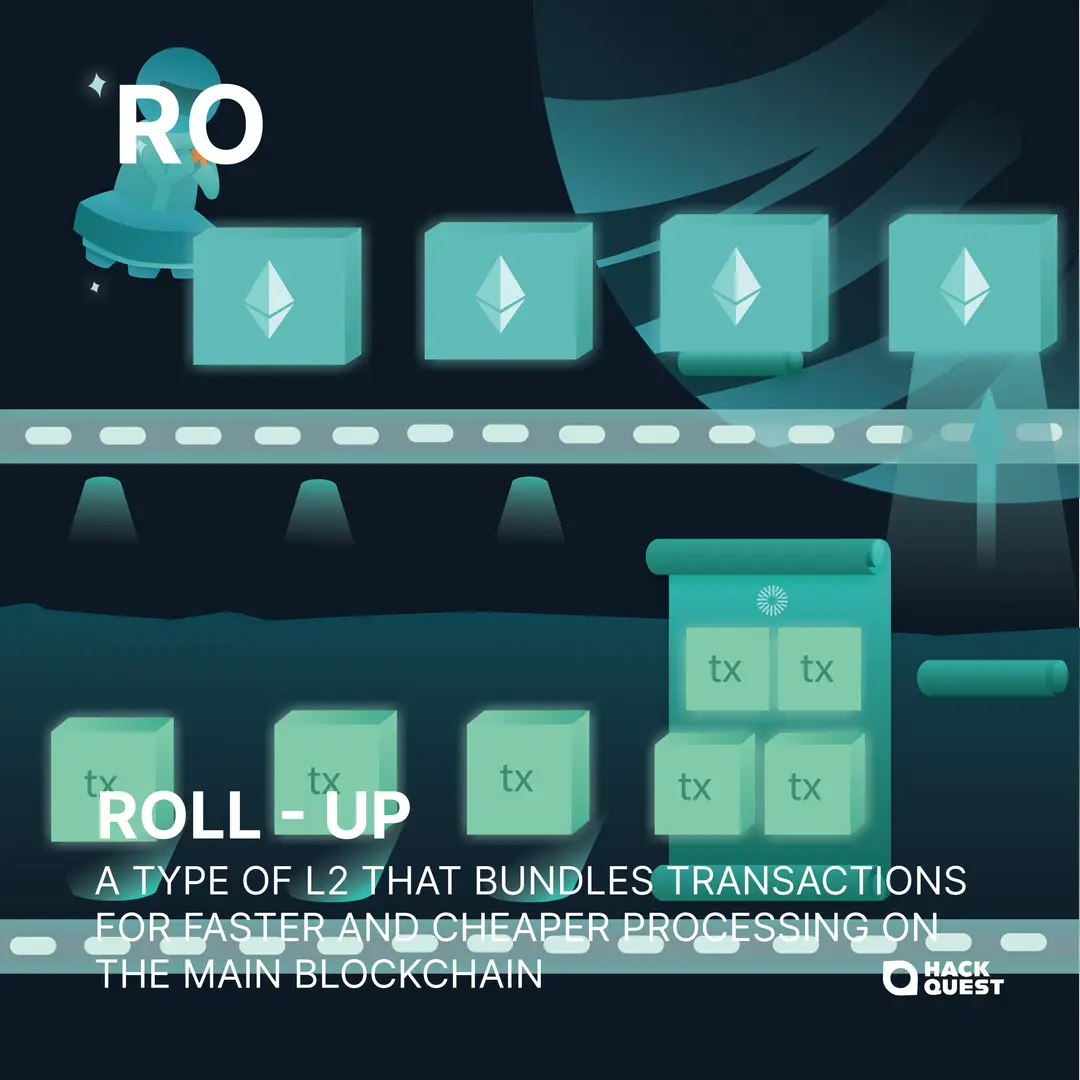Back
Rollups
Slang
By HackQuest
Apr 2,20243 min readWelcome to the world of Web3, where cryptocurrencies, blockchain, and a unique culture converge. Entering the world of Web3 can be both thrilling and overwhelming, especially when faced with the seemingly cryptic language used by enthusiasts. Don't worry if you feel they sound like some secret codes, we are here to unravel their meaning in Web3 context. In this article, we are going to introduce [Roll-up].

What Does ‘Roll-up’ Mean?
A roll-up is a layer 2 scaling solution for blockchains that helps increase the network's capacity to process transactions. It does so by "rolling up" or aggregating multiple transactions into a single transaction. This bundled transaction is then processed off the main chain (layer 1), but the final state is recorded on the main chain, significantly reducing the congestion and improving the network's throughput.
The Origin of Roll-up
Mechanism: Roll-ups work by executing transactions outside the main blockchain (off-chain) and then posting the data back to the main chain. There are two main types of roll-ups:
Zero-Knowledge Roll-ups (ZK-Roll-ups)
These roll-ups bundle hundreds of transactions off-chain and generate a cryptographic proof known as a zero-knowledge proof. This proof, along with the transaction data, is then posted to the main chain. The zero-knowledge proof verifies that all transactions in the bundle are valid without revealing their individual details, hence maintaining privacy.
Optimistic Roll-ups
These assume that all transactions bundled together are valid by default and only execute computations on-chain if a transaction is challenged. They provide a window during which users can dispute a transaction. If no challenge is made, the transaction is considered valid.
Why are Roll-ups Important?
Scalability
Roll-ups significantly increase the number of transactions a blockchain can process, addressing one of the critical bottlenecks of popular networks like Ethereum.
Reduced Costs
By aggregating transactions, roll-ups reduce the amount of data that needs to be stored on the main chain, lowering transaction fees for users.
Security and Decentralization
While roll-ups process transactions off-chain, they leverage the security and decentralization of the main chain for final settlement, ensuring the integrity of the network.
Examples of Roll-ups in Use
Ethereum has been a primary benefactor of roll-up technology, with projects like Optimism and zkSync implementing roll-up solutions to improve transaction efficiency and reduce costs. These projects are paving the way for broader adoption of roll-ups across various blockchain platforms.
Conclusion
Roll-ups represent a significant advancement in the quest for scalable, efficient, and secure blockchain networks. By allowing for more transactions to be processed off-chain while leveraging the security of the main chain, roll-ups offer a practical solution to the scalability challenges that have long plagued popular blockchain networks. As the Web3 ecosystem continues to evolve, roll-ups will likely play a crucial role in shaping the future of blockchain technology, making it more accessible and usable for a broader audience.
If you would like to learn more about slang in Web3, let’s explore more in our HackQuest Web3 Glossary!